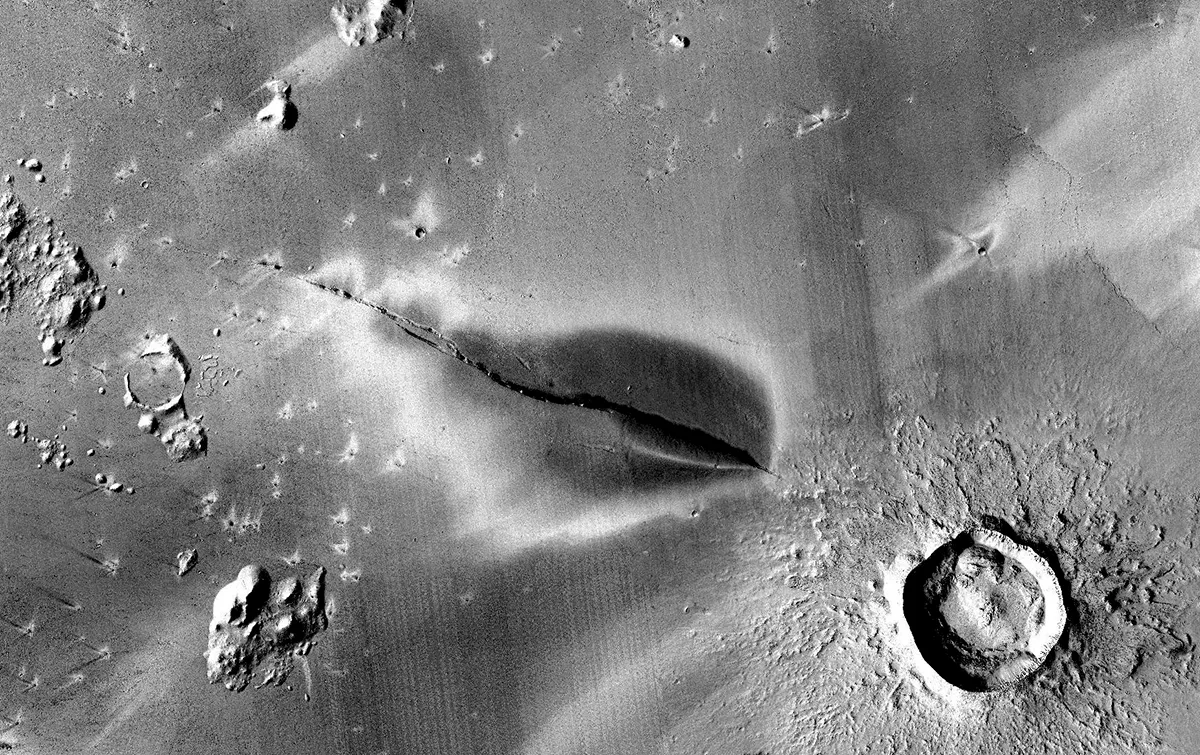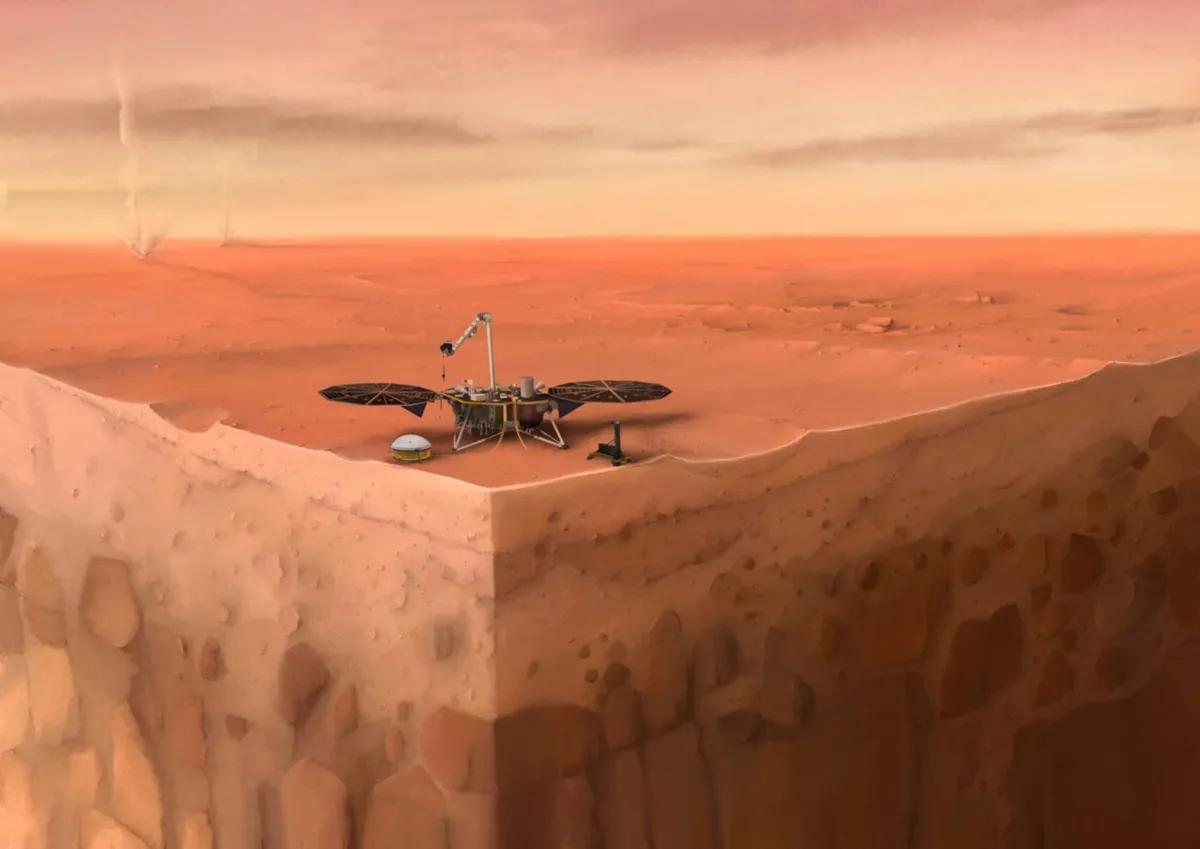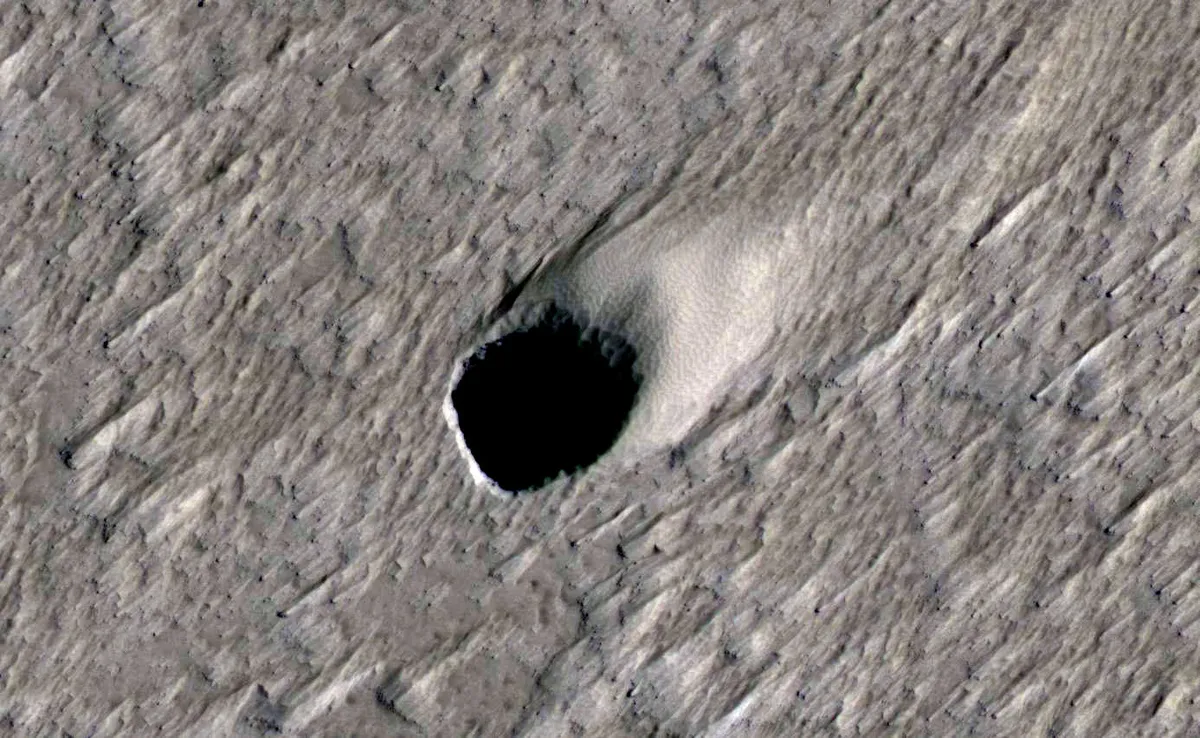Mars might not be such a dead planet after all, geologically speaking anyway. A newly discovered volcanic feature suggests there could have been activity on the surface in the past 50,000 years, according to a new study by researchers at the University of Arizona’s Lunar and Planetary Laboratory and the Planetary Science Institute in Tucson, Arizona.
"This may be the youngest volcanic deposit yet documented on Mars," says Dr David Horvath, from the Planetary Science Institute, who led the study.
Read more:
- The curious cloud above Arsia Mons Volcano
- Understanding the winds on Mars
- Could humans be too heavy to land on Mars?

Recent orbital images of Elysium Planitia have revealed a 32km-long volcanic fissure surrounded by a 13km-wide deposit of dark material.
Geologists believe it is the result of a pyroclastic eruption, where gases in the molten rock cause it to violently explode, rather than become the slow-flowing magma that spread across most of the Red Planet.
Most volcanic activity on Mars took place 3 to 4 billion years ago. Until now, there was no evidence to indicate Mars could still be volcanically active.
"This feature overlies the surrounding lava flows and appears to be a relatively fresh and thin deposit of ash and rock, representing a different style of eruption than previously identified pyroclastic features," says Horvath.
"This eruption could have spewed ash as high as 6 miles [10km] into Mars’s atmosphere. It is possible that these sorts of deposits were more common but have been eroded or buried."

NASA’s InSight lander, which is currently listening out for marsquakes, has measured two seismic events coming from the region around the fissure, indicating there is volcanic activity beneath the surface.
The region is also only 10km away from Mars’s youngest large crater, suggesting a recent impact could have trigged the activity.
"All the data seems to be telling the same story," says Associate Professor Jeffrey Andrews-Hanna, from the University of Arizona. "Mars isn’t dead."
Why Mars exploration is so important

Words: Chris Lintott
With four active robots on the surface, and a fleet of orbiting spacecraft, the Red Planet is coming under scrutiny like never before.
The most exciting results come when different observations can be tied together. Volcanic activity – like the kind that the team found using data from NASA’s Mars Reconnaissance Orbiter – might fit in with the observation from the Curiosity rover of ‘burps’ of methane, and its possible presence in the atmosphere.
Methane, which might be produced by volcanic activity or maybe just by biological processes, is the primary target for the European Space Agency’s Trace Gas Orbiter, though it has so far drawn a blank.
This article originally appeared in the July 2021 issue of BBC Sky at Night Magazine.


